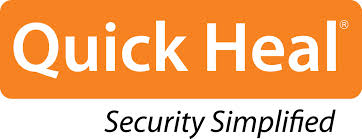- Feeble decline in the detection count of both Android and Windows malware with Windows computers witnessing a decline of 16% in the detection count
- An increase of 200% in the detection of mobile Ransomware making it close to 50% of the detections of all four quarters of 2015 combined
- Newer variants of Windows malware have joined the pack of the top 10 malware of Q2 and security vulnerabilities have swollen to scary proportions
- Q2’s Android malware detection has dropped by 2.1% as compared with Q1
- Detection of Potentially Unwanted Programs (PUAs) has shown an increase of 5% in Q2, as compared with Q1
Quick Heal Technologies today announced the results of its Second  Quarter Threat Report for 2016. The complete report, which can be downloaded from the Quick Heal website, outlines the top malware afflicting Windows and Android users, with a brief overview on each of the malware families. The report also compares the malware detection statistics of this quarter with that of the previous quarter.
Quarter Threat Report for 2016. The complete report, which can be downloaded from the Quick Heal website, outlines the top malware afflicting Windows and Android users, with a brief overview on each of the malware families. The report also compares the malware detection statistics of this quarter with that of the previous quarter.
According to the report, trojans, worms, infectors and exploits have shown constant detection rates during all the months of Q2. The combined figure of Adware and PUA category detection is 28% on an average. Ransomware detection has declined by a tiny margin in June when compared with May but is on a rise as compared to Q1 2016.
As observed in the detection statistics of Q2 2016, adware remains one of the major malware categories. The dominance of the ransomware family showed no respite even in this quarter. Locky Ransomware continued to maintain its dominance by encrypting files on the infected system and adding the “.locky” extension to them. Due to a lack of decryption possibility, Locky was considered as one of the most dangerous ransomware in this quarter.





